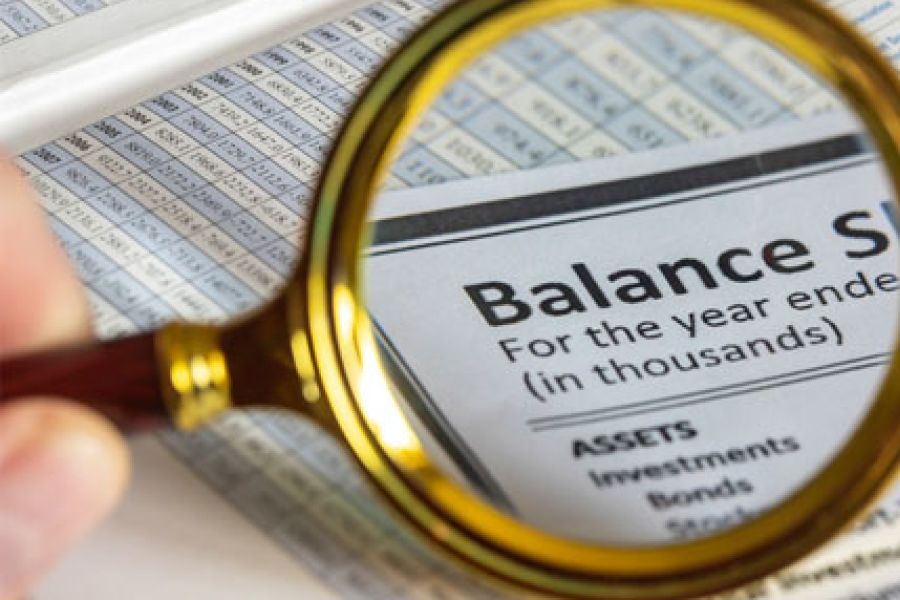Mergers and acquisitions can be stressful for entrepreneurs who have invested blood, sweat and tears in their businesses — or second-generation owners who are selling their parents’ legacies. Setting the asking price and understanding the deal terms, including complex tax matters, can be overwhelming. Fortunately, a business valuation professional has the financial knowledge and real-world experience to help maximize the selling price and minimize the guesswork. Preparing for sale Valuators understand the relationship between risk and return as well as factors that affect value. So they’re equipped to assist in making companies more attractive acquisition candidates. Before a business goes on the market, a valuation pro can help address the following critical items: Financial statements. Audited financial statements offer prospective buyers greater assurance than reviews, compilations or internal...

The starting point for a business valuation is generally the subject company’s financial statements. Here’s an overview of how historical financial statements can serve as the basis for a valuation professional’s conclusion under the cost, income and market approaches. Cost (or asset-based) approach Because the balance sheet identifies a company’s assets and liabilities, it can be a reliable source of financial information, especially for companies that rely heavily on tangible assets (such as manufacturers and real estate holding companies). Under U.S. Generally Accepted Accounting Principles (GAAP), assets are recorded at the lower of cost or market value. So, adjustments may be needed to align an item’s book value with its fair market value. For example, receivables may need to be adjusted for bad debts. Inventory may include obsolete...
Business valuation experts will usually provide formal written reports that explain how they arrived at their conclusions. Asking seven questions can help you determine whether an expert’s report is comprehensive and on-point. (1) Did the expert properly define the engagement? Most valuation reports start with a detailed description of the assignment. Beyond the name of the subject company, the definition includes: The size of the interest (the ownership percentage of the number of shares or units), Effective date of the valuation, Intended uses of the report, The standard of value (for example, fair market value, fair value or strategic value), and The basis of value (minority vs. controlling basis and marketable vs. nonmarketable basis). If the expert applied discounts for lack of control or marketability, a substantial...
Historical financial results are only relevant in a valuation to the extent that the business expects to achieve similar results in the coming years. When projecting future economic benefits, it’s important to consider expected changes to a subject company’s internal and external conditions. Challenging the status quo The last three to five years of financial statements are usually on the list of documents experts use to value a business. With some companies, it’s possible to simply take historical financial statements and apply an assumed growth rate into perpetuity. But experienced valuation professionals know that future performance can’t always be expected to mirror the past. One key reason is capacity constraints. To achieve an expected growth rate, a larger facility or additional equipment may be needed over the long...
The balance sheet — which shows a company’s assets and liabilities — is a logical starting point for valuing certain types of businesses. The cost (or asset) approach specifically focuses on this part of a company’s financial statements. Here’s an overview to help you understand this valuation technique. How does it work? When valuation professionals apply the cost approach, they convert the book values reported on the balance sheet to their respective fair market values. There are three key reasons that book value may not reflect fair market value to a hypothetical buyer or seller: 1. Use of historic cost. Under U.S. Generally Accepted Accounting Principles (GAAP), assets are recorded at historic cost. Over time, historic cost may understate market value for appreciable assets, such as marketable securities...
Valuing a private business is a complex endeavor. But, when all is said and done, valuation analyses boil down to three general approaches. 1. Market approach Under this approach, valuators derive pricing multiples from public or private comparable transactions. These pricing multiples are then applied to the subject company to derive its value. For example, an expert might calculate a median price-to-earnings multiple of 4.5 based on a sample of six comparable transactions. Then the valuator would multiply the subject company’s earnings by 4.5 to arrive at its value. The expert also must consider whether adjustments are warranted to account for the differences between the subject company and comparable firms. Two popular methods fall under the market approach. First, the guideline public company method uses the prices paid for...
An experienced business valuation professional considers more than just a company’s financial statements when quantifying its value. The professional conducts detailed interviews and asks for a variety of documents when gathering information to use to value the business — and some of this information may provide objective insight into how much the owners believe the business is worth. Here are some key examples. Buy-sell agreements Shareholders often protect their business interests with buy-sell agreements that contain valuation formulas to be used on a shareholder’s death or termination. Some detailed buy-sell agreements may even specify whether valuation discounts apply and, if so, how much. But if a buy-sell agreement has been superseded or is otherwise outdated, it may not be as relevant to current market values. Life insurance policies Life...
When divorcing spouses own a private business interest, it complicates the settlement process. The value of a business isn’t necessarily as straightforward as the values of other marital assets. And it’s often impractical to sell the business and split the proceeds, because there may be other owners who aren’t interested in selling and it takes time to sell a business. Plus, the business’s value might be partially excluded from the marital estate, depending on state law, legal precedent and prenuptial agreements between the spouses. Fortunately, a business valuation professional can help you sort through the issues. Tangible vs. intangible value The value of a business can be broken down into two pieces. First up are tangible (or hard) assets, which include such items as cash, receivables and equipment....
The cost (or asset-based) approach to valuing a business focuses on the balance sheet. This financial statement reports “book values” for the company’s assets and liabilities. Here’s how the cost approach works and when it might be an appropriate method of valuation. Book value vs. fair market value Amounts reported on a company’s balance sheet for its assets and liabilities may not reflect their fair market value to a potential buyer or seller. One reason is that, under U.S. Generally Accepted Accounting Principles (GAAP), assets are recorded at historic cost. Over time, historic cost may understate market value for appreciable assets, such as marketable securities and real estate. Additionally, internally generated intangible assets — such as copyrights, patents, brands and goodwill — are excluded from balance sheets prepared...
The value of a business interest is valid as of a specific date. The effective date is a critical cutoff point because events that occur after that date generally are not taken into account when estimating value. However, there are two key exceptions when subsequent events count. (1) When an event is foreseeable Subsequent events that were reasonably foreseeable on the effective date are usually factored into a valuation. That’s because, under the definition of fair market value, hypothetical willing buyers and sellers are presumed to have reasonable knowledge of relevant facts affecting the value of a business interest. Examples of potentially relevant subsequent events are: An offer to purchase the business, A bankruptcy filing, The emergence of new technology or government regulations, A natural or...











